
Most of us born before 1985 never thought we’d see the day when the fanny pack would rear its ugly head again. Sure, the fanny pack hasn’t quite regained social acceptability, but outdoor gear companies have somehow managed to design today’s MTB hip packs to be functional and sorta… cool? Still, lest riders fear their reputation is on the line, don’t worry: It’s not a fanny pack, it’s a hip pack!
Singletracks has tested at least 30 mountain bike hip packs over the past several seasons and we’ve found some are definitely better than others. Among the hip packs we’ve reviewed, these are the best so far. In addition to our list of recommended hip packs we’ve also included a buyers guide below to help you choose the best mountain bike hip pack for the type of riding you do.
- Best value MTB hip pack: Osprey Savu 5
- Best overall MTB hip pack: Patagonia Dirt Roamer
- Best hip pack for epic all-day rides: Showers Pass Ranger Waterproof hip pack
- Best hip pack hydration system: Camelbak Repack LR 4
Recommended hip packs for mountain biking
These are the waist bags Singletracks recommends based on quality of construction and materials, feature set, comfort, and overall value.
| Hip pack | Hydration | Capacity | Price |
|---|---|---|---|
| Camelbak Repack LR 4 | 1.5L reservoir | 4L | $85 |
| Dakine Hot Laps 5L | 2L reservoir | 5L | $100 |
| Hydro Flask 5L Down Shift | 1.5L reservoir | 5L | $100 |
| Osprey Savu 5 | 2 bottle holsters | 4L | $65 |
| Outdoor Research Freewheel 5L | 1 bottle holster | 5L | $85 |
| Patagonia Dirt Roamer Waist Pack | 2 bottle holsters | 3L | $69 |
| Rapha Trail Hip Pack | 2 bottle holsters | 3L | $90 |
| San Util Design Covert | None included | 2L | $135 |
| Showers Pass Ranger Waterproof Hip Pack | 2 bottle holsters | 7L | $130 |
| Thule Rail 2L Hip Pack | 2 bottle holsters | 2L | $75 |


Dakine Hot Laps 5L hip pack
- Price: $100
- Buy from Amazon and Backcountry
Product tester: Chris Daniels
The Dakine Hot Laps 5L is a favorite MTB hip pack thanks to the large, top loading main pocket and the set of webbing on the outside that can be used to strap extra gear like a jacket for longer rides. External compression straps help stabilize the pack on the trail and unlike a lot of the packs we’ve tested, the Dakine Hot Laps 5L comes with a 2L Hydrapak reservoir. With 5L of carrying capacity, the Dakine Hot Laps 5L isn’t the largest of the packs we recommend, but it’s up there.

Patagonia Dirt Roamer waist pack
- Price: $69
- Buy from Patagonia
Product tester: Jeff Barber
The Patagonia Dirt Roamer hip pack is thoughtfully designed with mountain biking in mind, and it shows. Two bottle holsters keep hydration within reach, and snacks are even more accessible thanks to right-sized compartments on the hip belt. The wide waist strap is soft and comfortable, keeping the pack stable and secure without feeling pinchy. We also love the external straps for carrying extra gear.
While the light blue/gray color shown here doesn’t look great after a dirty ride, the classic tan version promises a much more dirt-friendly look. Priced at $69, this is one of the most fully featured, quality packs we’ve tested. Read our complete Patagonia Dirt Roamer hip pack review.

Osprey Savu 5 hip pack
Product tester: Matt Miller
The Osprey Savu 5 bike hip pack checks all of the boxes and more. It’s more comfortable than wearing a full pack and I can still carry everything I need for big rides. Having room on the bike for another bottle becomes important if you’re going out for two hours or more, but for sub-two-hour rides, the Savu is an easy choice. A vented waist belt plus multiple zippered pockets and organizers make this a fully featured pack. Read our in-depth review of the Osprey Savu 5 hip pack.

Outdoor Research Freewheel 5L hip pack
- Price: $85
- Buy from Outdoor Research
Product tester: Matt Miller
The first mountain bike hip pack from Outdoor Research is a knockout. The Freewheel 5L is stable even loaded with goodies on the inside and a full water bottle. And best of all, the amount of usable space on the pack makes it much more capable than just a pack for lunch rides. Check out the full review of the Outdoor Research Freewheel hip pack.



Rapha Trail hip pack
Product tester: Gerow
The Rapha Trail Hip Pack leans hard on the cozy side of bags, with enough storage for snacks and spares. The pack’s 100% recycled rip-stop nylon is sturdy enough to last through multiple seasons of deep forest exploration. Stretchy mesh pockets on the sides can be used to hold water bottles, or a spare tube. There’s also an external shock cord for tying down an extra layer just in case. Read Gerow’s complete review of the Rapha Trail hip pack to learn more.

San Util Design Covert hip pack
- Price: $135
- Buy from San Util Design
Product tester: Matt Miller
The handmade, bespoke San Util Design Covert hip pack gives buyers a chance to stand out by choosing their own custom colors. It’s a simple, compact pack with a main compartment that’s secured with a flap and drawstring to keep contents secure. External straps offer additional storage and the wide waist belt features a premium magnetic buckle. Read Matt’s full review of the San Util Design Covert hip pack.

Thule Rail 2L hip pack
Product tester: Matt Miller
Thule has made a solid pack with the Rail 2L, and if buyers are looking for a smaller or larger MTB hip pack, the 0L and 4L Thule Rail packs are also worth a look. The look and fit are great and the 2L version is just the right amount of space for small to medium size rides. Two bottle holsters and a handy carrying strap on top make the Thule Rail a practical choice. Get more details about the Thule Rail 2L hip pack in this review.
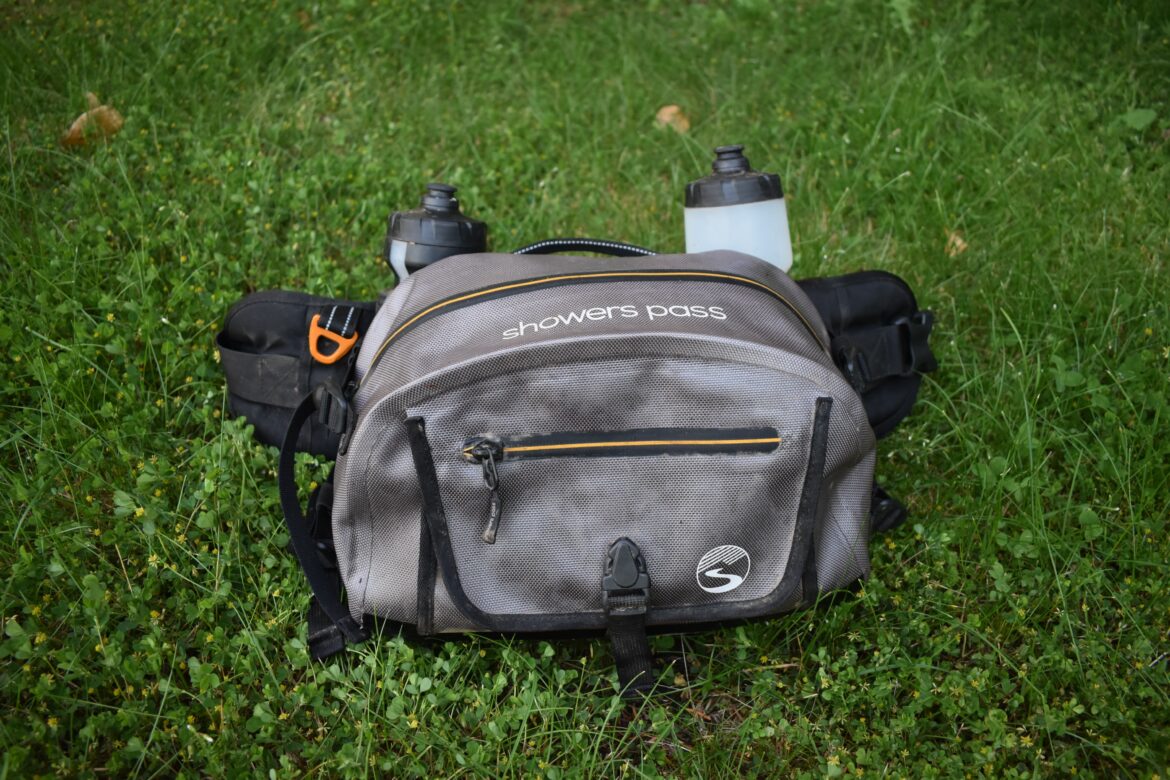

Showers Pass Ranger waterproof hip pack
- Price: $130
- Buy from Showers Pass
Product tester: Sam James
Priced at $130, the Showers Pass Ranger hip pack is not cheap, however it packs a lot of versatility and storage into the hip pack format. I now find myself reaching for this pack for pretty much any ride over an hour or two long, or when the weather is looking questionable. High quality materials and waterproof construction ensure the pack keeps tools, snacks, and extra layers dry. Read Sam’s detailed review of the Showers Pass Ranger hip pack to learn more.


Camelbak Repack LR 4 hip pack
- Price: $85
- Buy from Amazon
Product tester: Chris Daniels
The CamelBak Repack LR can carry a total of four liters, 1.5 of which is filled with the burly hydration bladder. The wrap-around hose has a magnetic tube trap, locking bite valve, a length-adjusting clip, and can be routed out of either side of the bag. It has a compact feel and does the best job of the hip packs we’ve tested at delivering hydration thanks to its well designed reservoir and hose system.

Hydro Flask Down Shift 5L hip pack
- Price: $100
- Buy from Amazon and Backcountry
Product Tester: Matt Miller
The Hydro Flask Down Shift 5L hip pack is notable for its insulated reservoir sleeve which is designed to keep drinks cool on hot summer days. Like many of the other packs we like the Hydro Flask Down Shift features zippered snack compartments on the waist belt, external straps for cinching extra gear, and organizers inside the main storage compartment. Read Matt’s complete review of the Hydro Flask Down Shift hip pack.
Outdoor hip pack buyers guide
Why use a hip pack for mountain biking?
Why not!? Besides offering a fashionable look, there are actually some very practical benefits to the hip pack versus a hydration backpack on the mountain bike trail.
- Moving weight down the back lowers the rider’s center of gravity, which may enhance bike handling.
- Fanny packs are smaller so riders are forced to carry less, and sometimes less is more.
- A smaller pack and less stuff means less weight and less sweat.
- A hip pack makes gear access easier, which can eliminate the need to remove the pack to grab a tool or snack.
- If you look good, you ride good, amirite?
On the flip side, a hip pack may not be appropriate for every mountain bike ride, everywhere. It’s fun to see how little gear we can get away with until it’s not. Generally speaking, I feel comfortable carrying the amount of gear and water most waist bags are capable of when:
- The ride lasts fewer than three hours.
- It’s not winter.
- I can hike to my car within a reasonable amount of time.
- It’s not so blistering hot and humid that I’ll need more than two liters of water.
In other words, hip packs are a good choice for relatively short rides on familiar trails, and in mild conditions.






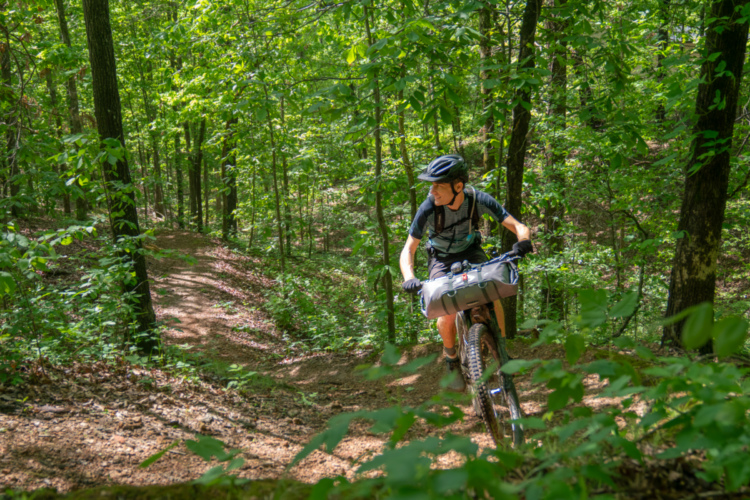
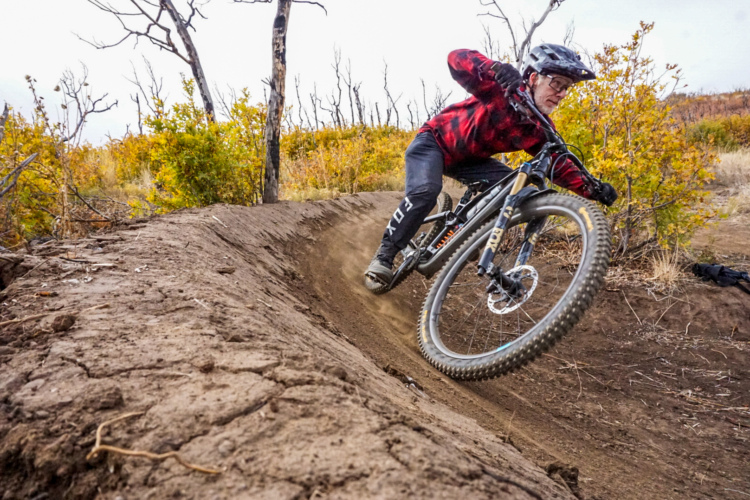
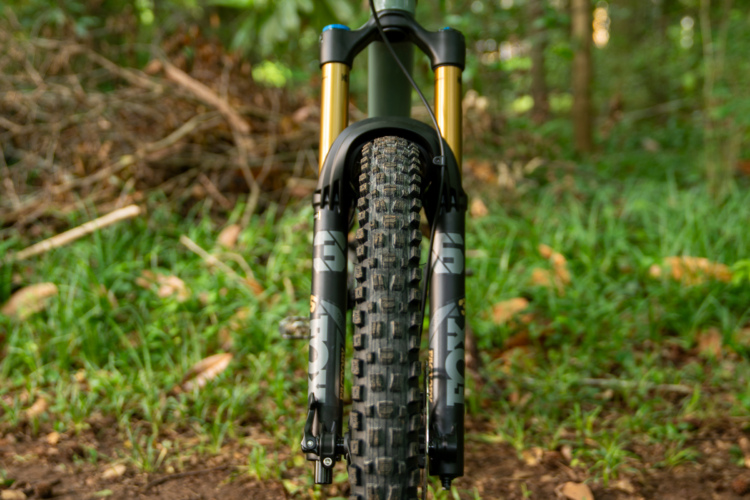
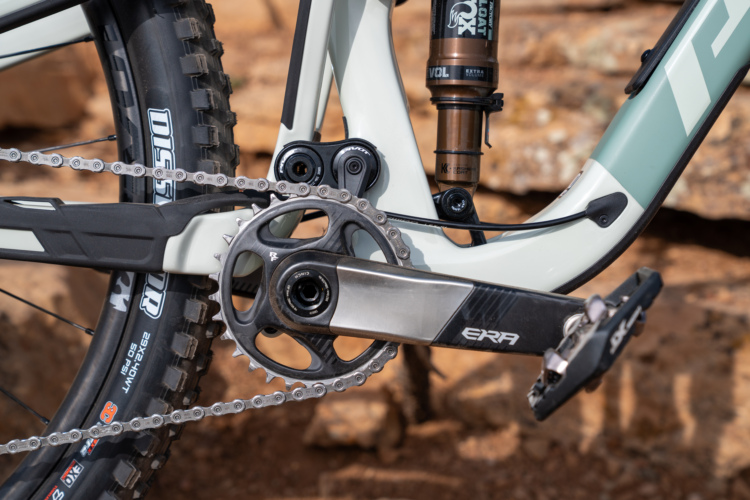

3 Comments
Jan 21, 2024
May 11, 2018
If I live another 30 years, the new fanny packs will be marginally different like these I 'spect.
Aug 12, 2019